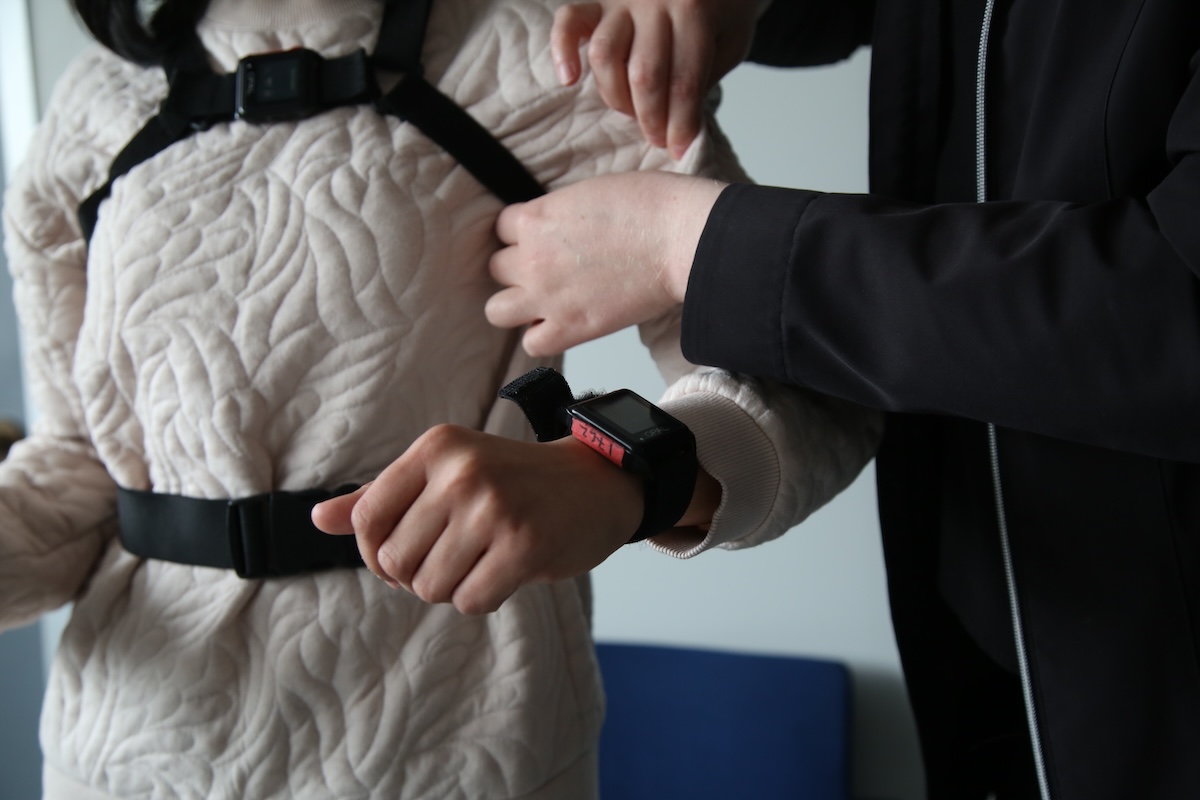An upcoming FDA-funded study from TC’s Lori Quinn, Professor of Movement Science and Kinesiology, will explore the potential of digital sensors to track early-stage symptoms of Huntington’s Disease. Working with her research partner, Jamie Adams, a neurologist at the University of Rochester Medical Center, as well as scholars from University of Massachusetts and Tel Aviv University, Quinn will use wearable digital sensors to monitor and measure changes to two Huntington’s symptoms, gait and chorea — which is involuntary movement that characterizes the disease. The development of new monitoring tools will greatly assist the creation of needed therapies.
A rare neurodegenerative disease, Huntington’s has no cure or approved disease-modifying interventions, in large part because of difficulty in tracking efficacy in drug trials. “In order to demonstrate that any intervention, whether it's a drug trial or physical therapy-based, is effective, you have to have good outcome measures,” explains Quinn, a leading scholar in Huntington’s Disease who has studied the disease since the early 1990’s. “Outcome measures have to reflect things that are sensitive to the disease, meaningful, and that can be easily and readily collected.”
Currently, drug trials rely on brain imaging to measure outcomes and these tests come with some major disadvantages, mainly the high cost and uncertainty related to cause of changes. Developing a means to affordably and accurately measure outcomes is of major interest to the FDA, which provided $2.2 million in funding over two years through its Digital Health Technologies for Drug Development program.

Example of the digital sensors that will be used on study participants. (Photo: Bruce Gilbert)
Researchers will collect data from wrist and trunk sensors worn continuously by people with early-stage Huntington’s and a control group. This will then be analyzed using a groundbreaking symptom mapping approach to ensure the measures are meaningful to participants.
Ultimately, the research team aims to develop sensitive outcome markers that can be leveraged in a wide range of clinical studies. “We hope we'll be developing the standards for digital technology in all clinical trials in Huntington's,” says Quinn. She and Adams have already invested five years of research into the potential of wearable technology through their Digital Markers Working Group based out of University of Rochester Medical Center.
The research has potential applications for other conditions, like Parkinson’s Disease or Alzheimer’s. “We all use wearable data,” says Quinn, referencing the popularity of FitBits and Apple watches. “We can use that to change our behavior. We think [wearables] will have broad applicability to help understand what's important to monitor.”
